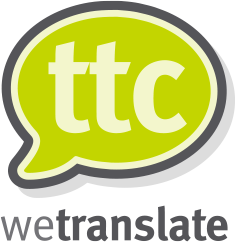
Just like every other industry, the translation industry has its own jargon. We speak this special language every day in conversation with our colleagues, translators or clients, and most of the time it frames our scope of work. Launching a project without knowing some common acronyms can mean that you need to face some unexpected consequences.
Are you collaborating with a translation agency for the first time and trying to understand the industry jargon? Are you a translator who is puzzled by the acronyms used in an e-mail and who wants to understand the requirement fully? Or are you working for a translation agency who would like to learn about these mystery terms? If your answer to one of these questions is “Yes”, we know that this guide will come in handy.
Unravel the mystery and read about common acronyms and terms used in the translation industry:
- TEP: Translation, Editing and Proofreading
One
of the workflows that translation companies use when they manage a project. It
means your document will be translated, edited by a second linguist and
proofread before submission.
- EOB: End of Business
COB: Close of Business
COP: Close of Play
SOB: Start of Business
These are time-specific acronyms and they are not limited to the translation industry. Even though it’s somewhat controversial to use these because the opening and closing times depend on the company and the country, they are widely used for everyday projects. Giving a specific time is always recommended to prevent misunderstandings.
- GMT: Greenwich Mean Time (GMT + 00:00)
BST: British Summer Time (GMT + 01:00)
CET: Central European Time (GMT + 01:00)
When dealing with international clients or providers, you should bear in mind that they may be in a different time zone. Always state time zone when corresponding with your international contacts about deadlines or meetings, at least for the first time.
- TM: Translation Memory
Translation Memory is a bilingual/multilingual database which allows you to save previous translations. It saves time and cost for the same or similar jobs, ensuring consistency.
- TB: Term Base
A termbase has the same principle and stores the translations of specific terms of a given industry. A termbase is essential if a client has preferred terms to be used in their translations.
- MT: Machine Translation
Machine
Translation is a form of translation that is produced by artificial
intelligence. Even though it is a way of saving money and time, MT often needs
post-editing by humans in order to produce good results. There is continuous
work to improve MT in the industry.
- NT: Non-Translatable
DNT: Do not Translate
These refer to the
words, phrases, expressions or segments that should not be translated and left
as they are in the target language. They can be a branch/organisation name,
products or abbreviations. These are usually defined by the client.
- QA: Quality Assurance
TQC: Translation Quality Control
These are the processes to ensure that the translation contains no typos, punctuation mistakes, wrong numbers, logical/grammatical errors and any other potential errors. Please bear in mind not every translation company offers this as their standard service.
- LSP: Language Service Provider
TSP: Translation Service Provider
An LSP or a TSP is a company which offers a variety of linguistic services such as translation or interpreting.
- DTP: Desktop Publishing
DTP is another service LSPs can provide. It is the process of preparing a document for printing with a special page layout software, whether in the original language or multilingually. This can be a brochure or a user guide.

